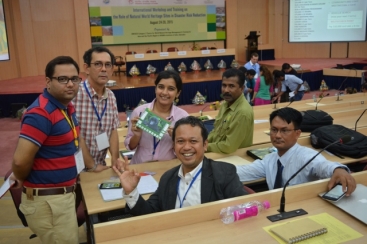
IN FOCUS: Saxon-Bohemian Switzerland in the heart of Europe
A conservation atlas for transboundary conservation areas
Restoration of the Rio Bravo-Grande

The WCPA’s Transboundary Conservation Specialist Group (TBC SG) was invited by the UNESCO’s Category 2 Centre for Natural World Heritage Management & Training for Asia and the Pacific Region, located at the Wildlife Institute of India in Dehradun, to deliver a presentation on transboundary conservation and assist during an International Workshop and Training on the Role of Natural World Heritage Sites in Disaster Risk Reduction. The event was held on 24-28 August 2015 and included a field visit to Taj Mahal World Heritage Site and Bharatpur Bird Sanctuary. TBC SG was represented by its Regional Coordinator for Asia, Dr. Rahimatsah Amat.
World Heritage properties are exposed to natural (i.e., flood, drought, earthquake, Tsunami) and man-made (i.e., forest fires, armed conflicts, industrial accidents, mass refugee movements) disasters, which threaten their integrity and may compromise their natural values. Hundreds of sites are virtually defence-less with respect to potential disasters. The objectives of the workshop and training were:
To identify and assess natural and man-made disaster risks at World Heritage properties in the Asia-Pacific Region; To raise awareness about the need to integrate special concern for natural and mixed World Heritage properties into national disaster reduction policies and develop an Action Plan for Disaster Risk Reduction in World Heritage Management plans; and Carry out training for managers of natural and mixed World Heritage properties in disaster risk reduction and adaptation strategies.150 participants from 10 countries (Bangladesh, Bhutan, India, Indonesia, Malaysia, Myanmar, Nepal, Sri Lanka, Thailand and Vietnam) included site managers from 25 designated and tentatively listed World Heritage Sites, and more than 30 resource persons.
To view Dr. Amat’s presentation at the event, please visit this link.







